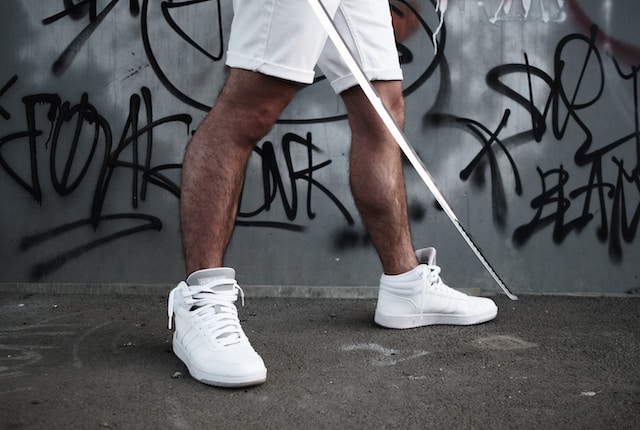How to Choose the Best Katana – A Beginner’s Guide

I. Introduction
Welcome, aspiring samurai! If you’ve found your way here, chances are you’re interested in owning your very own katana. These beautiful and deadly weapons have a rich history that dates back to feudal Japan, and are still revered by martial artists and collectors alike today. Choosing the right katana can be a daunting task, especially for beginners. That’s why we’ve put together this comprehensive guide to help you navigate the world of katanas and make an informed decision. We’ll discuss everything from the anatomy of a katana to the different types available, and how to evaluate craftsmanship. By the end of this article, you’ll be well-equipped to select a katana that will suit your needs, and maybe even impress your fellow sword enthusiasts. So let’s get started on your journey to finding the perfect katana!
Understanding the Anatomy of a Katana
Before diving into the specifics of choosing a katana, it’s crucial to understand the different parts that make up this iconic sword. Knowing these components will help you better appreciate the artistry and craftsmanship that goes into creating a katana.
Consider the following aspects of the blade:
- Length: The blade is the heart of the katana. Traditionally, its length can range from 60 to 73 cm (23.6 to 28.7 inches), with variations designed for specific uses or personal preferences.
- Curvature: The elegant curve of a katana’s blade is not just for aesthetics; it also improves cutting efficiency and balance.
- Thickness: Katanas often have a thicker spine for added strength, tapering towards the cutting edge for sharpness and agility.
There’s also the tang – the unsharpened portion of the blade that extends into the handle. It provides stability and helps to balance the sword. The handle is important as well, especially its:
- Length: The handle, or tsuka, is typically about one-third the length of the blade, allowing for a comfortable grip and control during use.
- Materials: Traditional katanas feature a wooden core wrapped in ray or shark skin, then bound with a silk or cotton cord. This combination ensures a secure grip.
Finally, there’s the saya – the wooden scabbard that protects the blade when not in use. It’s often crafted from lightweight, durable materials and adorned with various designs to complement the katana’s aesthetics.
By familiarizing yourself with these essential components, you’ll have a better understanding of the katana’s construction and be able to identify key features when choosing your own sword.
Types of Katanas
Now that you’re acquainted with the anatomy of a katana, let’s explore the various types available on the market. Katanas can be broadly categorized into traditional and modern types, with each offering unique features and advantages.
The traditional katanas are:
- Shinken (real sword): A shinken is a functional, razor-sharp katana made using traditional Japanese forging techniques. These swords are designed for cutting and are favored by experienced martial artists and collectors.
- Iaito (practice sword): Iaito are non-sharpened katanas used primarily for training in the Japanese martial art of Iaido. They closely resemble shinken in weight and balance, but the unsharpened blade ensures a safer practice environment for beginners.
Modern katanas include:
- Carbon steel: Carbon steel katanas are popular due to their affordability and durability. They can be found in various carbon content levels, with higher levels generally offering improved hardness and edge retention.
- Stainless steel: Stainless steel katanas are more resistant to rust and corrosion, making them easier to maintain. However, they tend to be less durable and are not recommended for serious cutting practice.
For those seeking a truly unique katana, custom-made options are available. Skilled artisans can craft a sword to your exact specifications, incorporating your preferred materials, designs, and features. These katanas can be costly but are a worthy investment for dedicated enthusiasts.
Understanding these different types of katanas will help you determine which category best suits your needs, whether you’re a beginner looking for a practice sword or a collector seeking a stunning addition to your arsenal.
Selecting the Right Blade Material
The material used for a katana’s blade plays a significant role in its performance, durability, and maintenance requirements. When choosing the right blade material for your katana, consider the following factors:
- Purpose: Are you planning to use your katana for cutting practice, martial arts training, or display purposes? Your intended use will guide your choice of blade material.
- Budget: Different materials come with varying price points, so keep your budget in mind when selecting a blade material.
- Maintenance requirements: Some materials are more prone to rust and corrosion, necessitating regular upkeep to ensure longevity.
Here are the pros and cons of each Katana steel type:
- Carbon steel: Affordable and durable, carbon steel katanas are an excellent choice for cutting practice and martial arts training. However, they require regular maintenance to prevent rust.
- Stainless steel: Stainless steel katanas are low-maintenance and budget-friendly, making them ideal for display purposes. They are not recommended for serious cutting due to their lower durability.
- Folded steel: Folded steel katanas boast a beautiful pattern on the blade, resulting from the traditional folding process. They can be expensive and require regular maintenance but offer superior cutting performance.
- Tamahagane (traditional Japanese steel): Tamahagane is the traditional steel used in authentic Japanese katanas. It is exceptionally strong and sharp, but also rare and expensive, making it a choice for collectors and connoisseurs.
